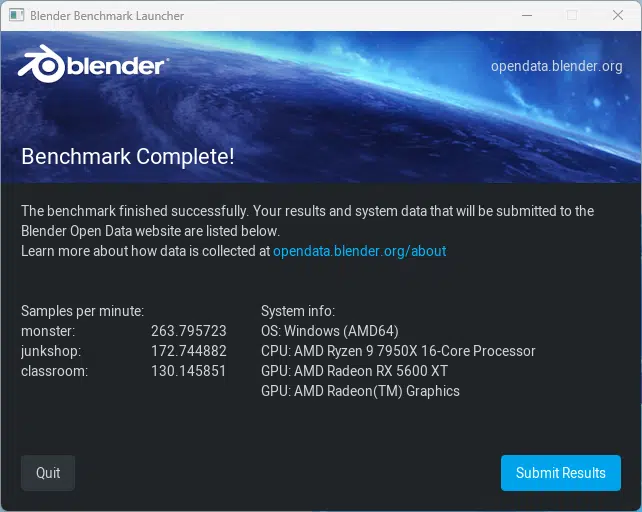
Introduction
Today we got our hands on the ASRock X670E Pro RS, which is the bigger brother of the ASRock B650 Pro RS we reviewed earlier this year that we quite liked. The ASRock X670E Pro RS is available in the upper $200 range online currently, so it is quite an affordable X670E-based motherboard. We are going to put this board to the test and see if it is worth the premium over its little brother.
The ASRock X670E Pro RS is based on AMD’s X670E chipset, the current top-of-the-line chipset from AMD. Natively this chipset has PCIe 5.0 for the M.2 slot, and the primary PCIe x16 slot, for a total of 20 PCIe 5.0 (of the 24 maximum available on the platform), this is in line with every other X670E motherboard we have seen. Similar to the previous AM5 platform motherboards we have reviewed, the main M.2 slot uses PCIe 5.0 lanes directly from the CPU.
Packaging and Contents
The ASRock X670E Pro RS continues where the B650 Pro RS left off, as a motherboard targeted at the budget-conscious consumer, meaning there is not much in the way of accessories in the box. You will find two (2) SATA cables, four (4) M.2 screws, a WiFi Antenna with mount, a riser board for larger GPU stabilization, and the typical manual and installation papers.



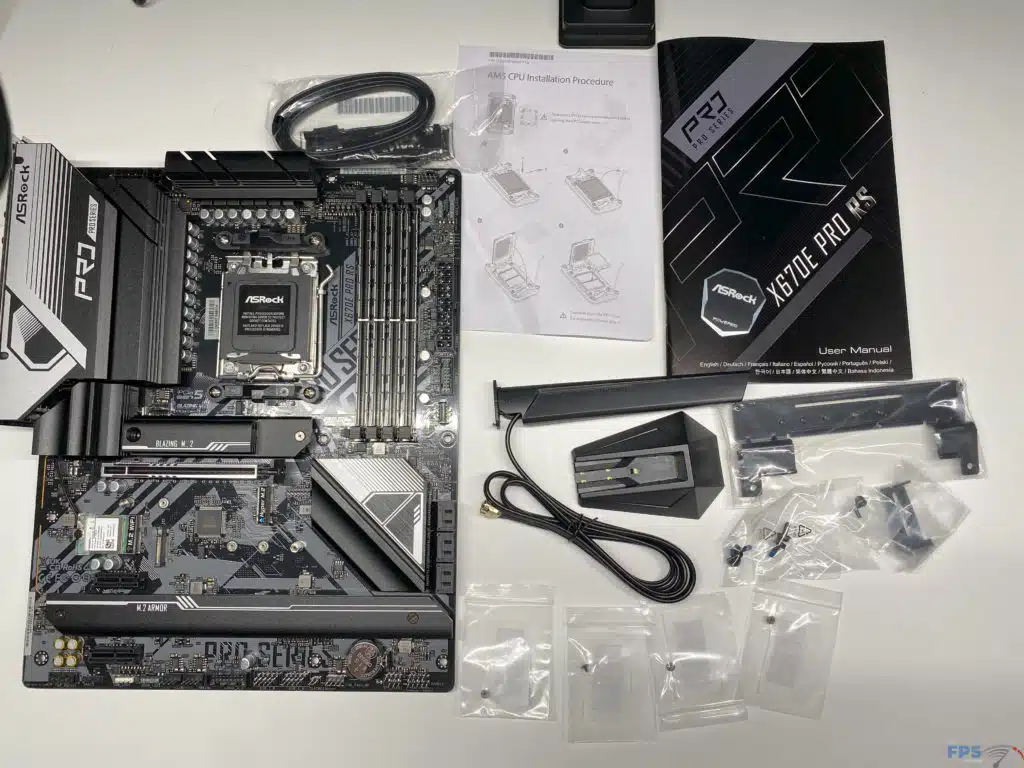

ASRock X670E Pro RS PCB & Features
The overall layout and construction of this motherboard is very similar to the B650 Pro RS, which we quite liked. This motherboard is well built with a hefty cooling solution on the digital VRMs, as well as the cooling provided for the chipset and three of the M.2 slots.
While we appreciate having cooling provided for M.2 slots, especially having a hefty cooling solution on the PCIe 5.0 M.2 slot, we need to point out we had issues with the screws holding in the lower plate. Specifically, make sure you use a very small Phillips head to remove the screws, we have provided a close-up picture of the screws, it would be nice to have a more defined screw head pattern as this did cause some issues with removing the plate.
Additionally, we see an issue that we have seen on nearly all AM5 series motherboards we have reviewed, where the upper M.2 slot cooler makes the removal of a graphics card with a backplate trickier than it really needs to be due to its proximity.
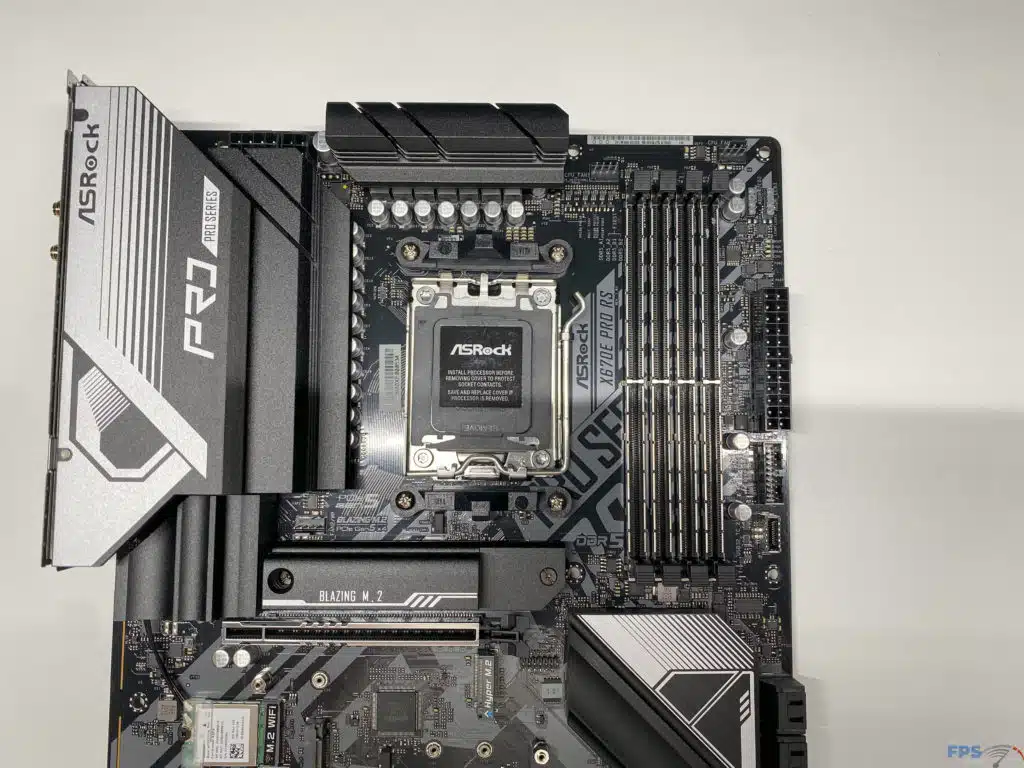
As with other budget-minded X670E motherboards we have reviewed, we see ASRock going with a 14+2+1 DrMOS SPS, Smart Power Stage, technology on this motherboard. Somewhat surprisingly this is the exact same VRM design we saw on the B650 version of this motherboard, not that this is a bad thing as the motherboard met and exceeded any expectations we had, just surprising to see the same design on the higher-end motherboard.
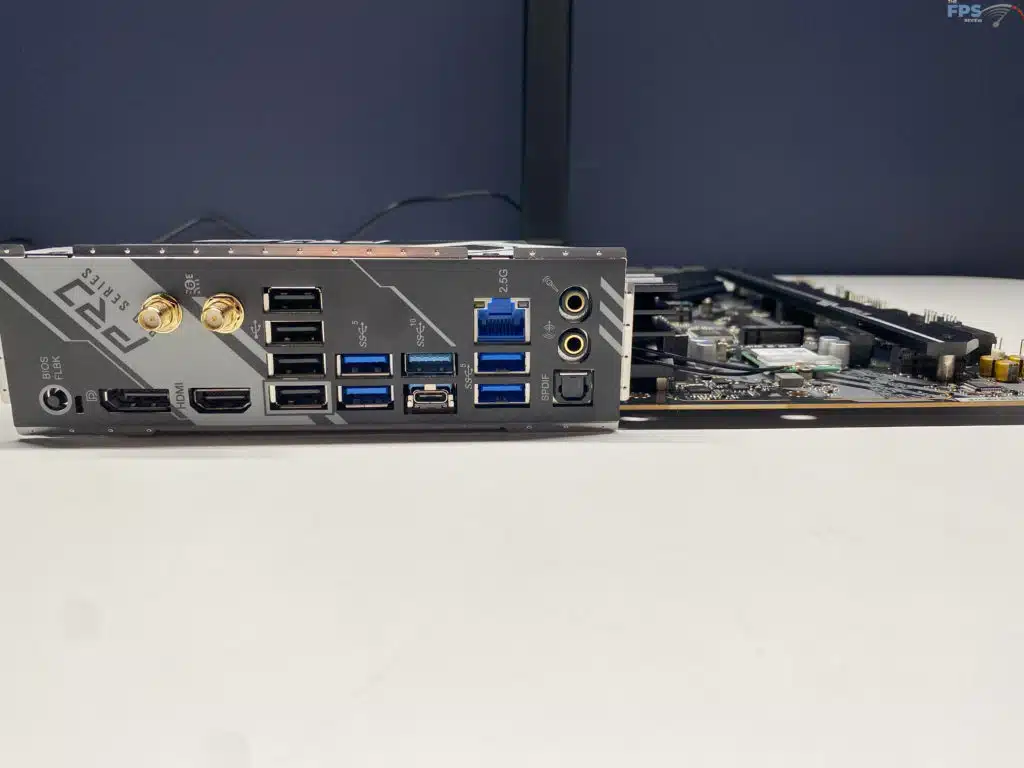
For storage on this motherboard, we have six (6) SATA 6GB/s ports from the chipset, two (2) of the M.2 slots are served directly from the CPU, while the remaining three (3) are served by the X670E chipset itself. All of the M.2 slots will support up to a 2280-sized M.2 drive, which should cover the vast majority of storage devices on the market today. Only the topmost slot is a Gen 5 slot while three (3) of the remaining four (4) are Gen 4, with the last slot being a Gen 3 slot. You will want to install your fastest SSD in the top slot to take advantage of the PCIe 5.0×4.

Expansion slots on this motherboard are via three (3) PCIe slots, with the top slot being the only Gen5 slot and the only one that is a full x16 slot. The remaining two slots are both Gen4 x1 slots, with a further single M.2 slot (Key E), to support the type 2230 WiFi / Bluetooth module.
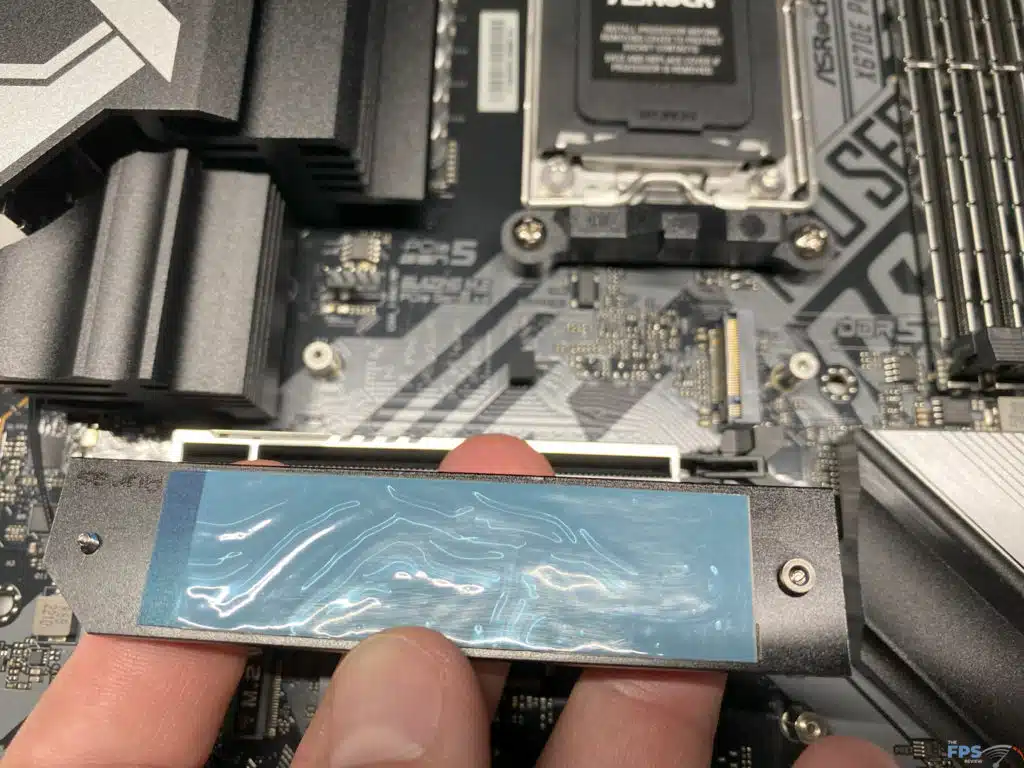
Additionally, we see plenty of expansion from internal headers, where we have the ability to add 1x USB 3 Gen2x2 Type C, four (4) more USB 3 Type-A connectors, and four (4) more USB 2 Type-A Connectors for front panel connections.
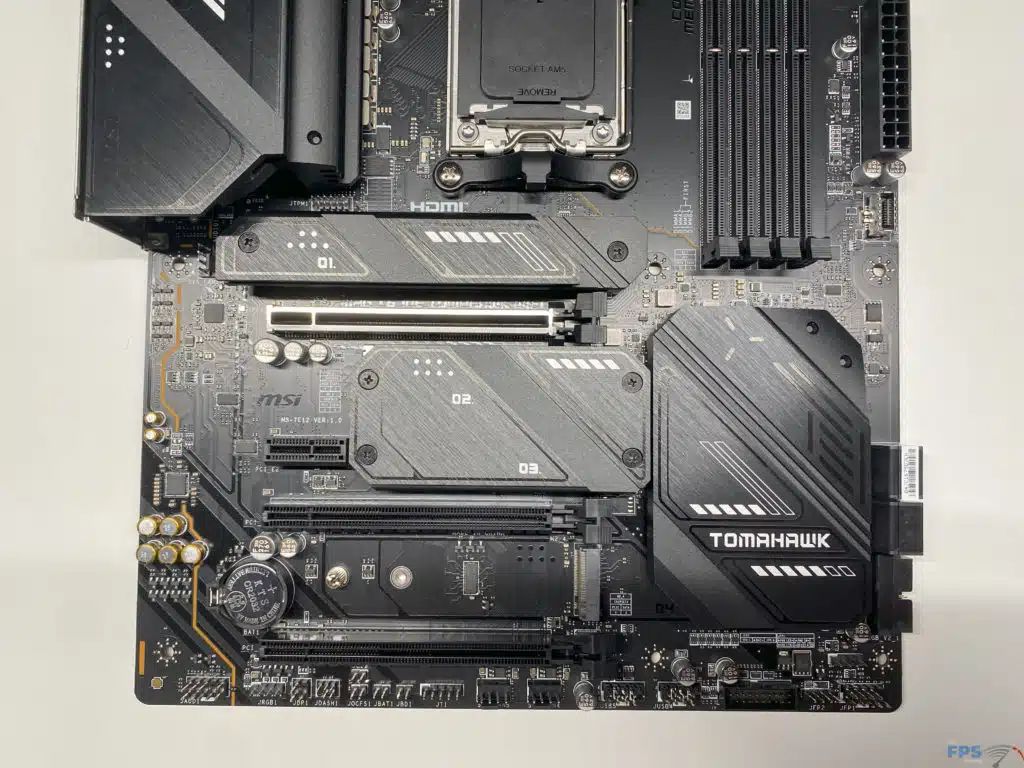
On this motherboard, we have a total of six (6) 4-pin type connectors, one (1) is dedicated to the CPU Fan (Up to 1A / 12W), one for a CPU Fan or water pump (2A / 24W), the remaining four (4) are for chassis fan (2A / 24W), and will auto-detect if 3-pin or 4-pin fans are in use. All of these connectors are controllable directly through the BIOS with fan curves of your choosing. For testing we set all fans and pumps to 100% to help minimize the factor heat would play in our testing.
Additionally, you will have plenty of RGB connector options. There is a single RGB LED header, supporting up to 36W of lighting, and three more addressable LED headers allowing for a 15W LED strip each. All of these are controllable by the ASRock software suite.
As with most current gaming motherboards, there are plenty of RGB connections and control options. You will find two (2) 4-pin RGB LED connectors, and two (2) more 3-pin ARGB Gen2 connectors, all of which are controllable by the MSI software suite.
As with all of AMD’s B650 and X670-based chipsets, this motherboard only supports DDR5 memory. Specifically this motherboard has four total slots with a maximum capacity of 192 GB. There is support for speeds of 7600+ MHz, with only non-ECC / un-buffered memory being supported. This motherboard allows AMD EXPO (A-XMP) profiles for the memory, which are readily available within the BIOS as soon as you boot to use.
For audio, the ASRock S670E Pro RS uses the Realtek ALC897 Audio Codec to provide up to 7.1 channel surround sound, as well as has a S/PDIF output.


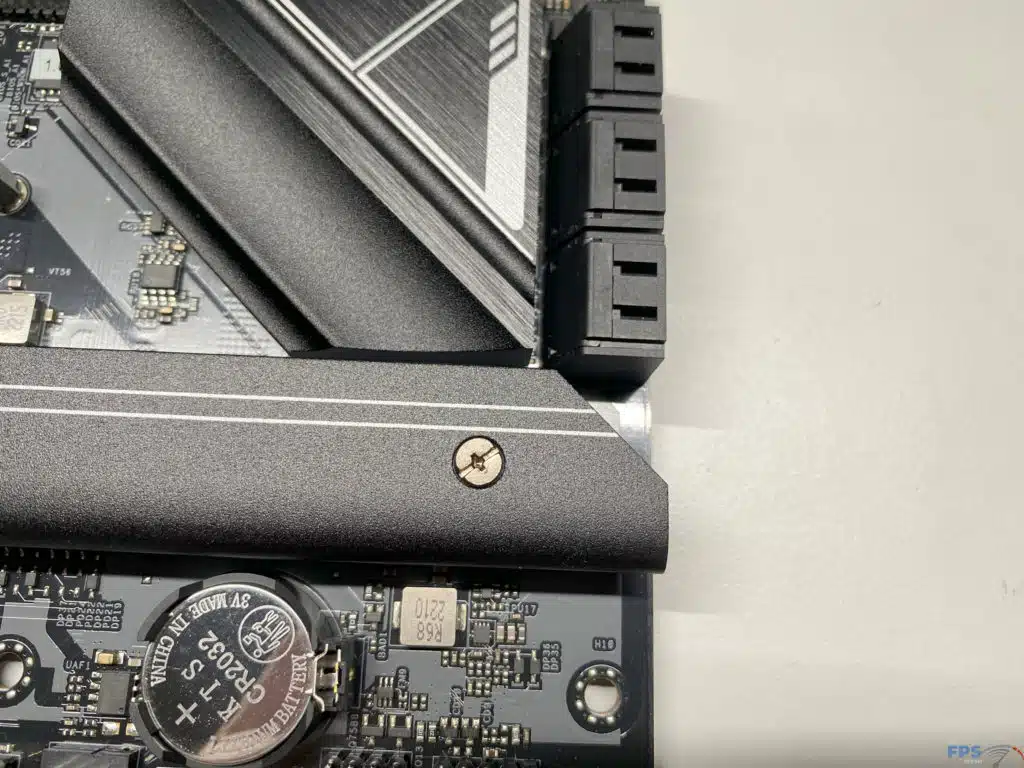

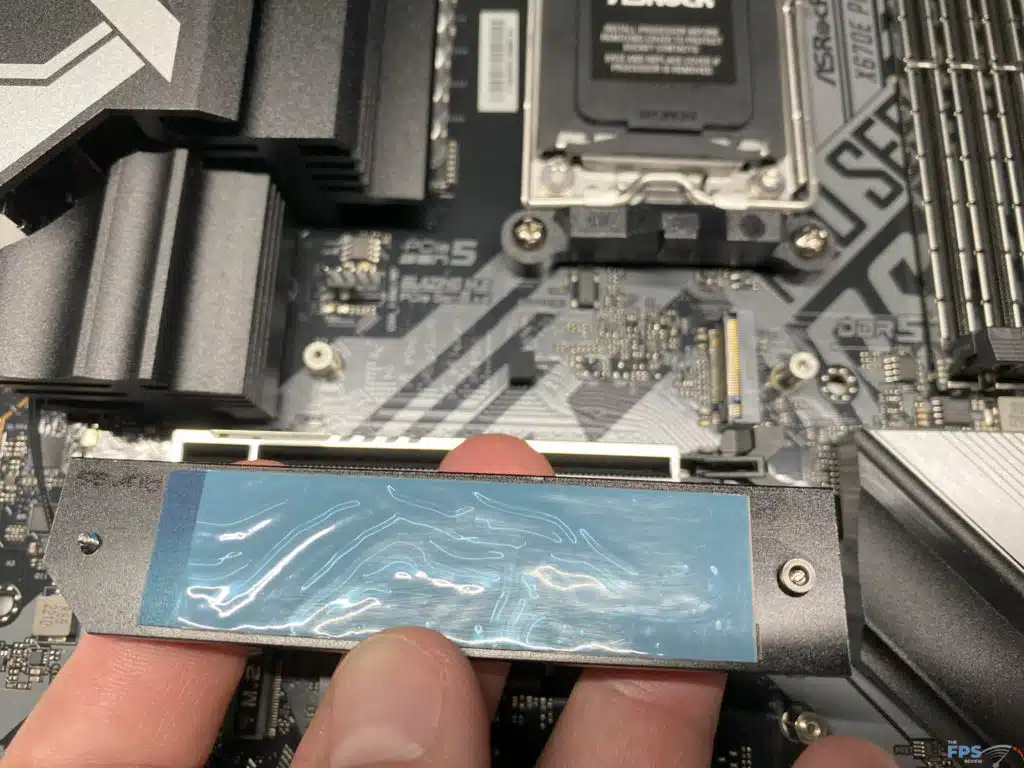

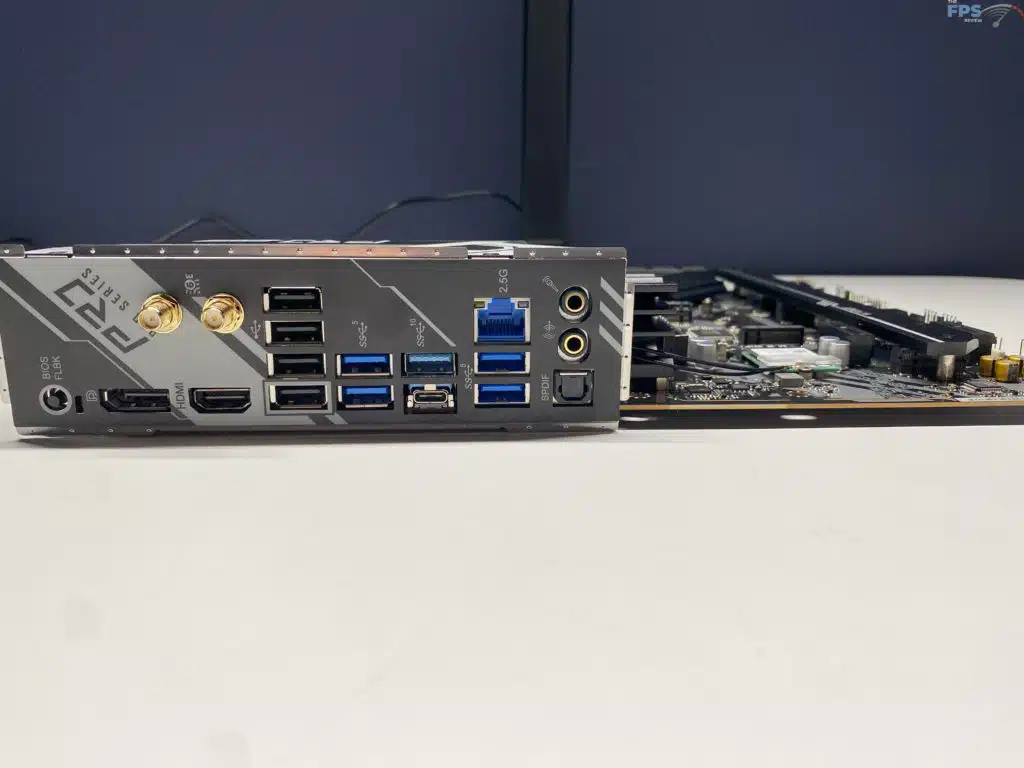
BIOS
The ASRock X670E Pro RS features a single 256 Mb American Megatrends Inc. (AMI) UEFI Legal BIOS with GUI support. Prior to testing, we upgraded our BIOS to the latest stable version, 1.28 released on July 28th, 2023. All of our testing and images were done after this BIOS update. It is important to note that this BIOS update includes the AGESA ComboAM5 1.0.0.7b patch, so it won’t be affected by the bad BIOS images causing some AM5 motherboards to over-volte the CPU.
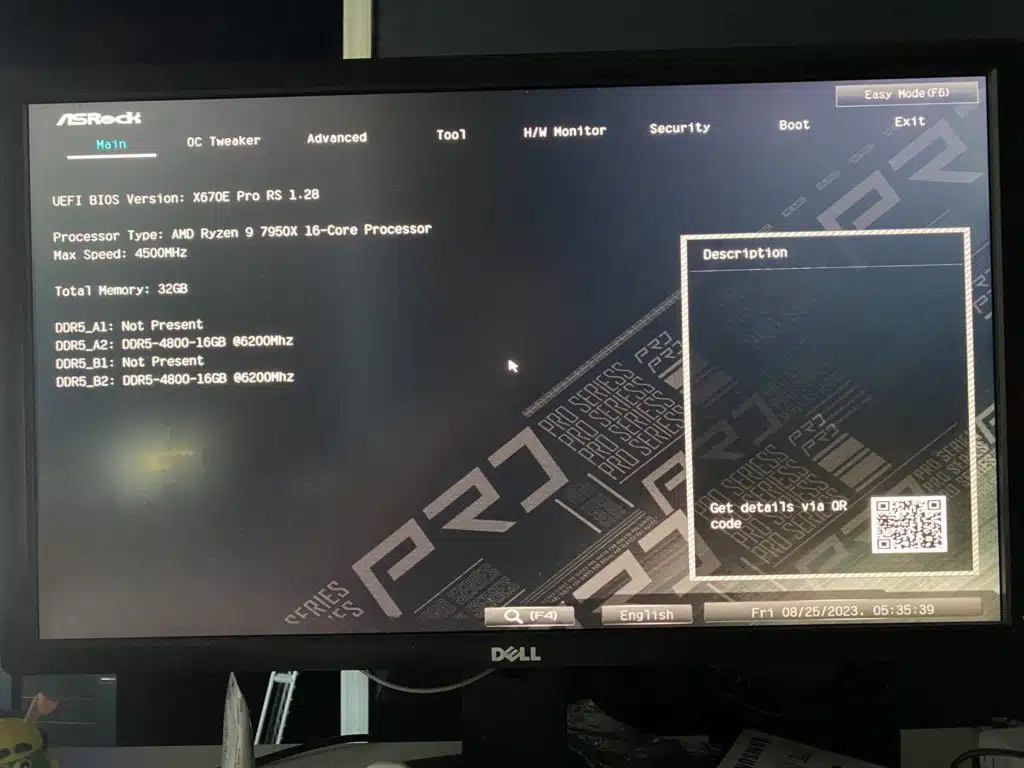
Those of you who are familiar with previous generation ASRock products, or current generation products, will have familiarity with this UEFI BIOS interface. The BIOS itself was set up almost identically to the B650 Pro RS we previously reviewed. When we started to poke around the BIOS we had no trouble finding any features or any options anyone might want to see.
Similar to the other ASRock motherboards we have reviewed we are greeted with the Advanced mode rather than the Easy Mode. This is because within Easy Mode there are barely any options to adjust, so starting in Advanced makes sense. As always you can jump between modes using “F6”. We are only going to touch on the highlights of the BIOS since we have gone a bit further in depth in other reviews with it being very similar to previous motherboards, as such we will rely on the full gallery at the bottom of this section to show more of the in-depth options available.
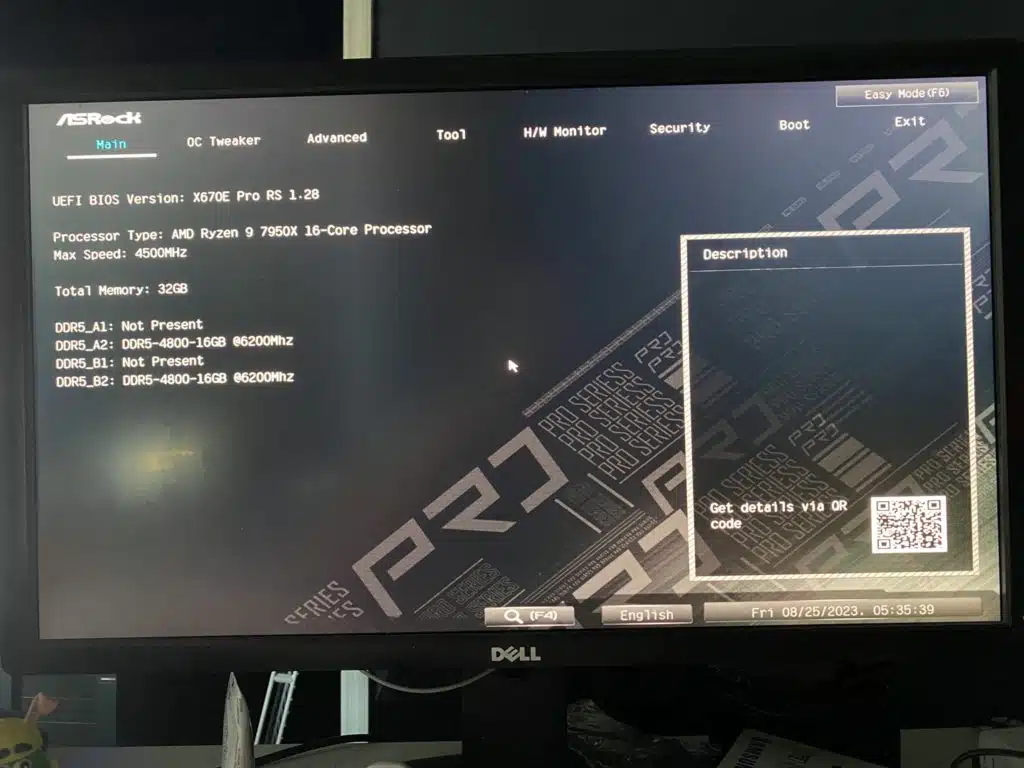
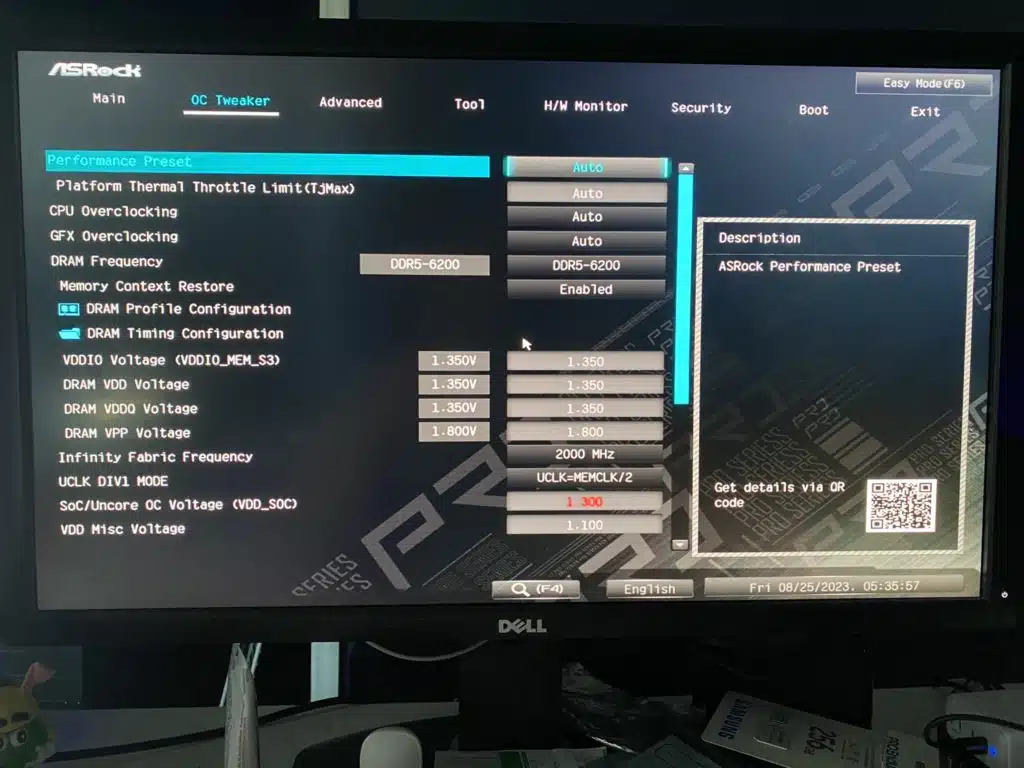

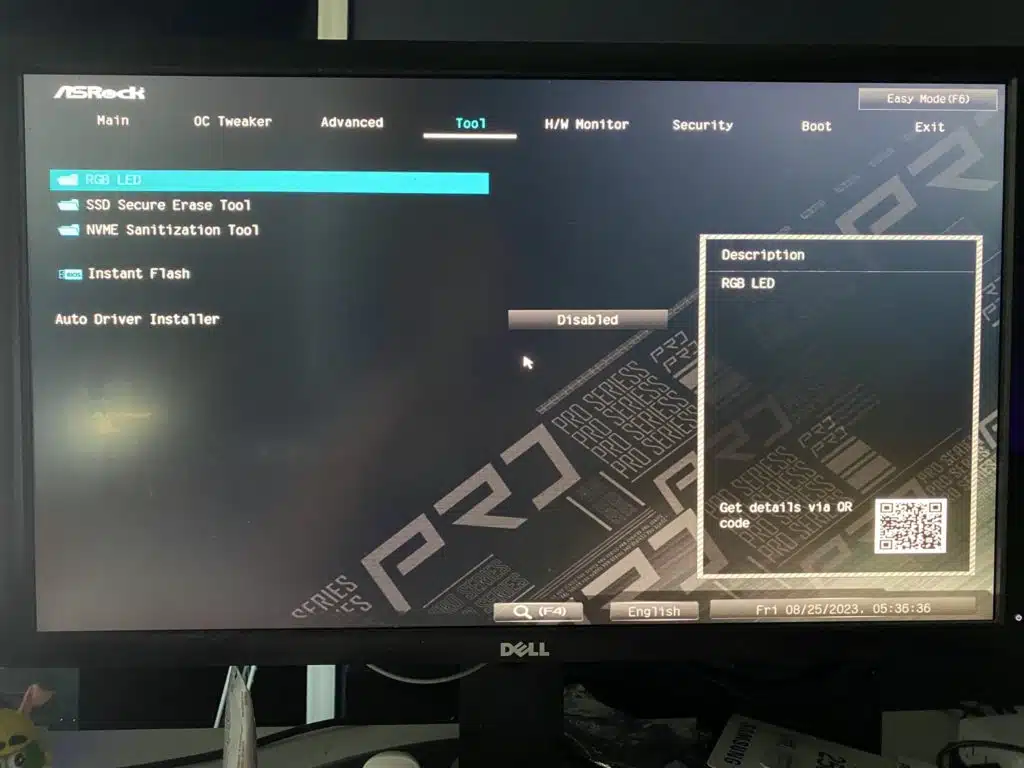
Most of the users who will be going into the BIOS will be looking at how to overclock their CPU, and are looking for the PBO settings. These can be only found in the Advance settings and can be found on the second tab, “OC Tweaker”, where all the different overclocking settings can be found. As typical for our reviews we run into a wall with our 7950X CPU at 5.1GHz and have left it at stock PBO settings for our testing.
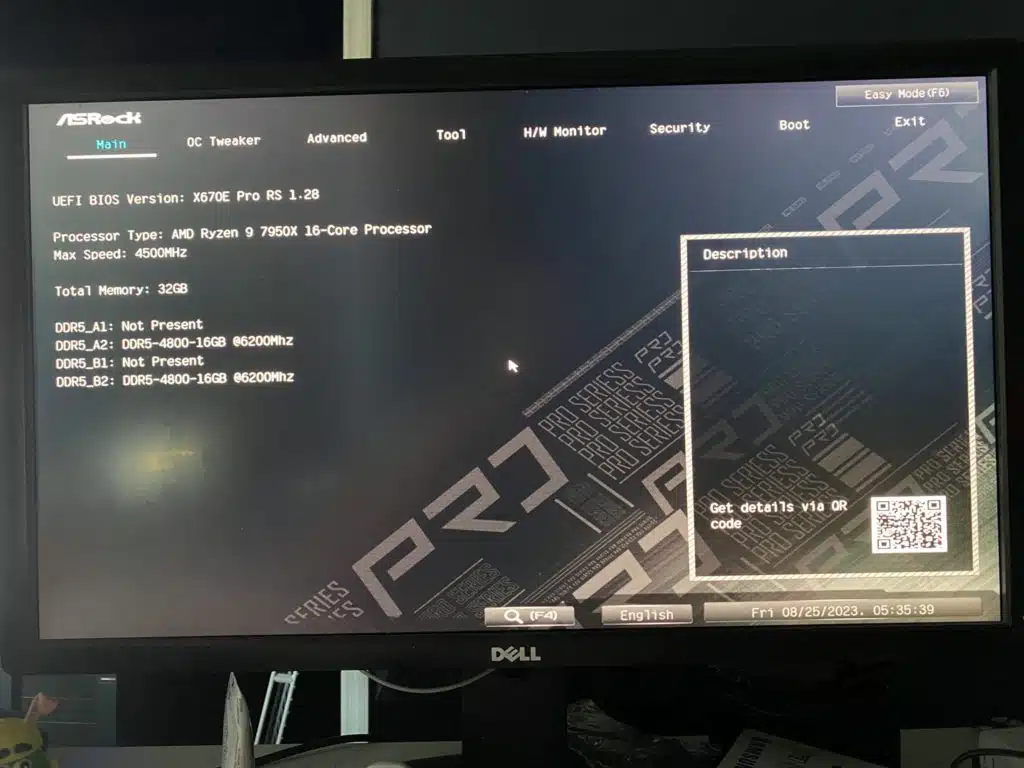
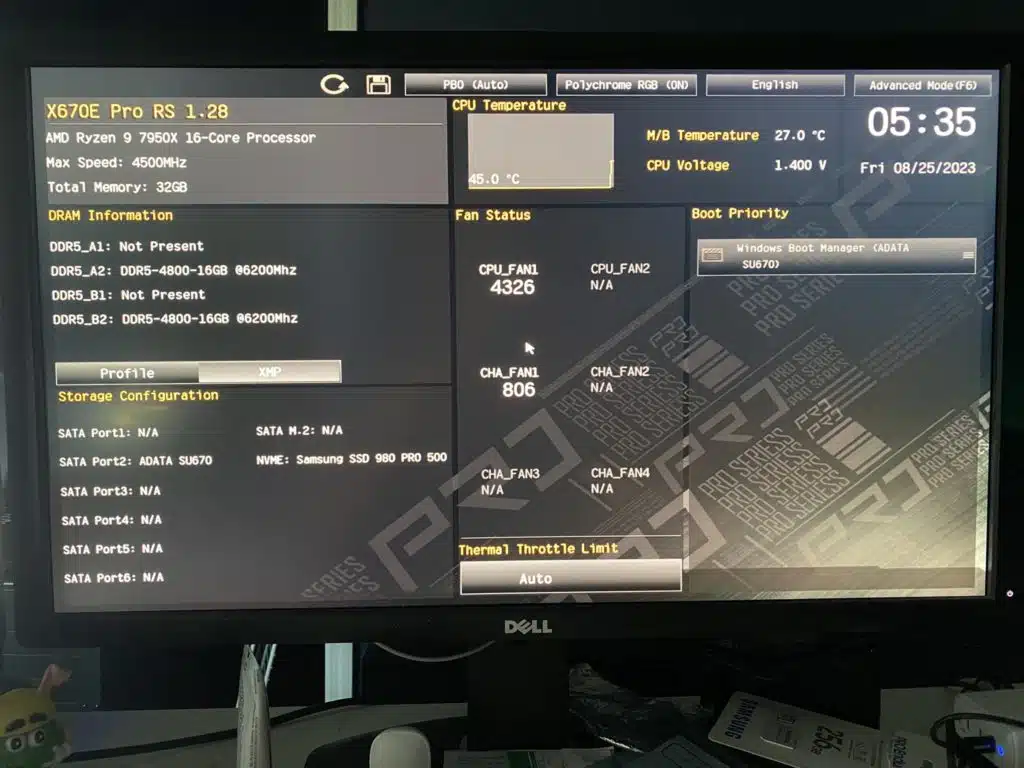

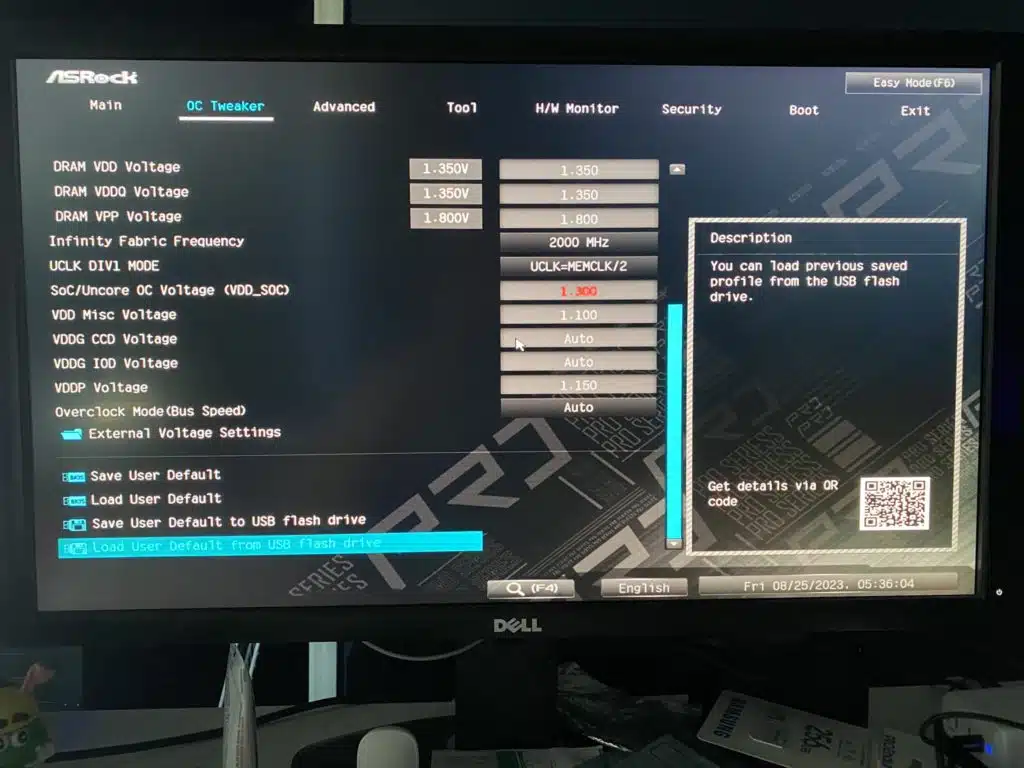

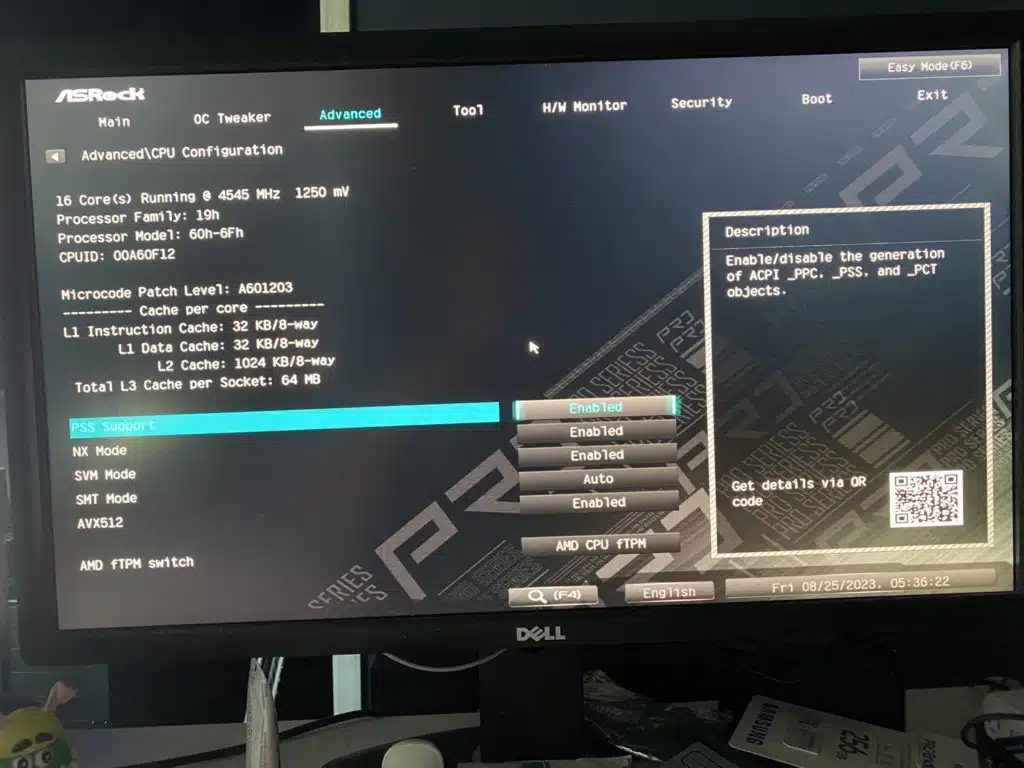

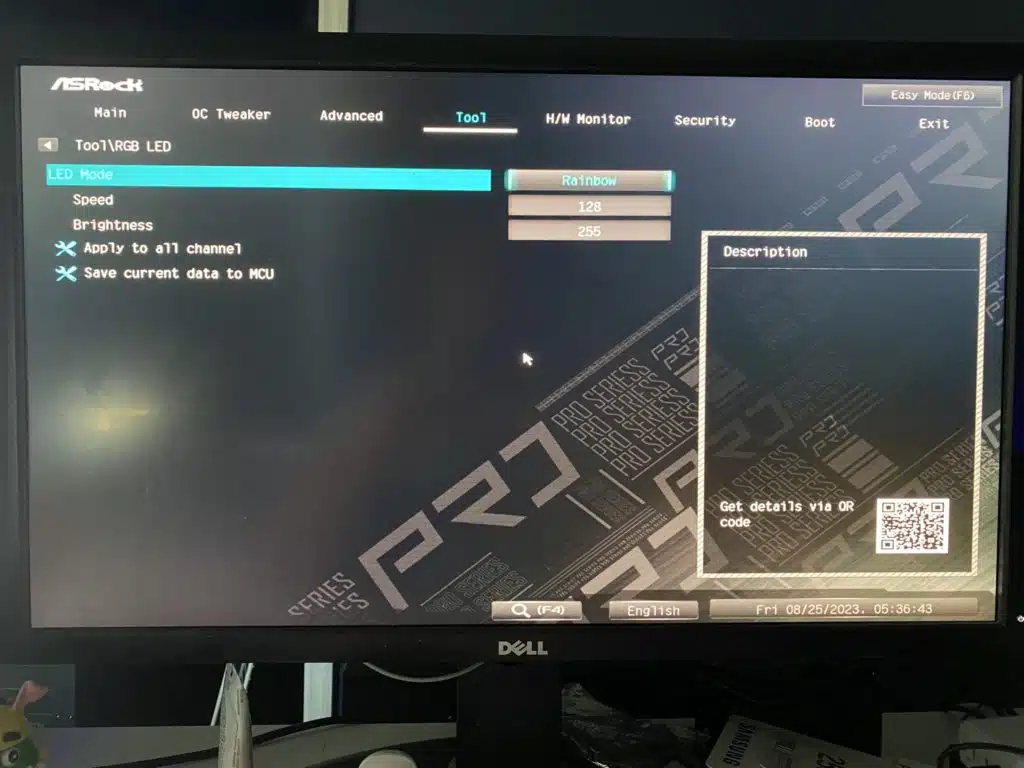
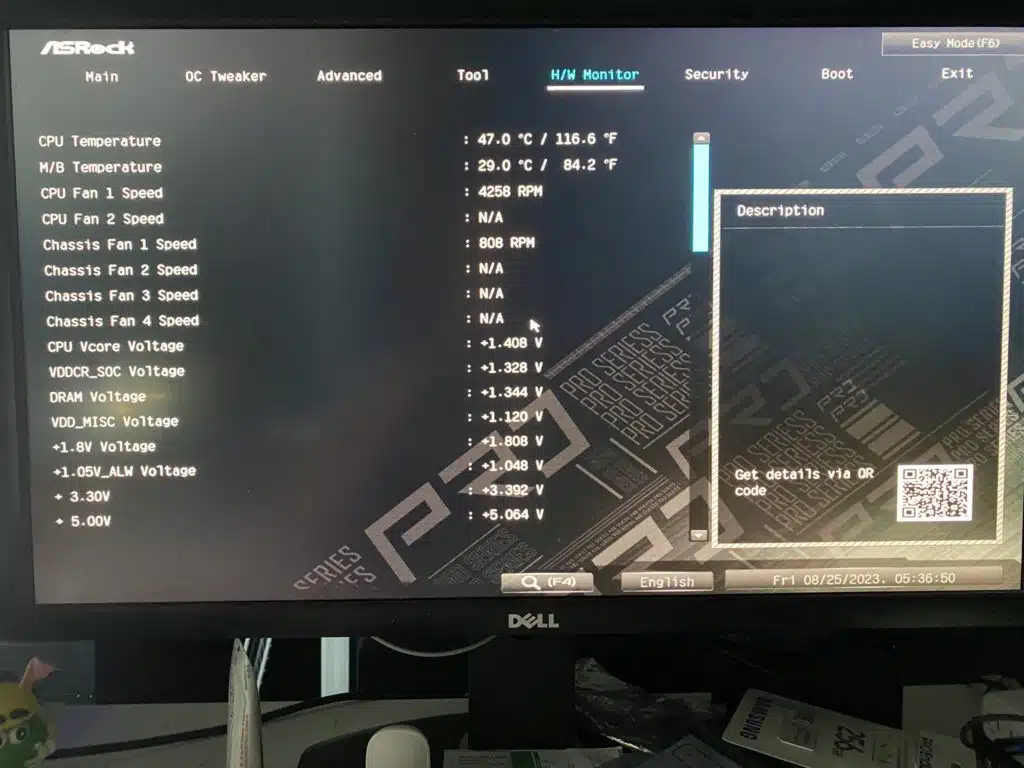
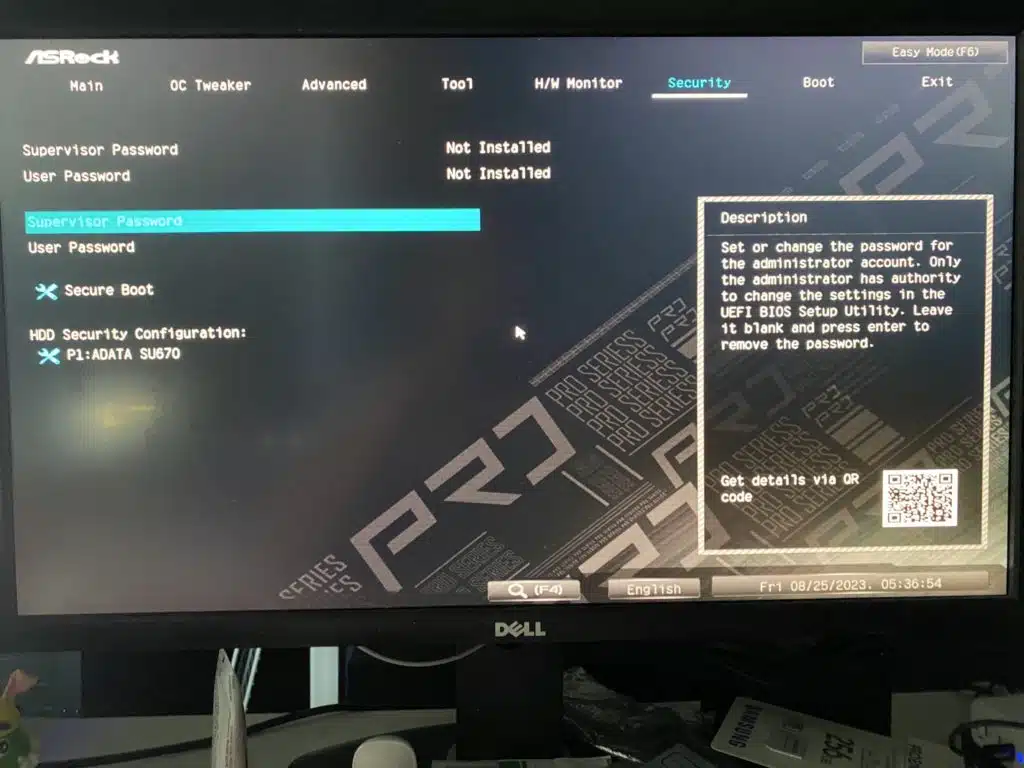
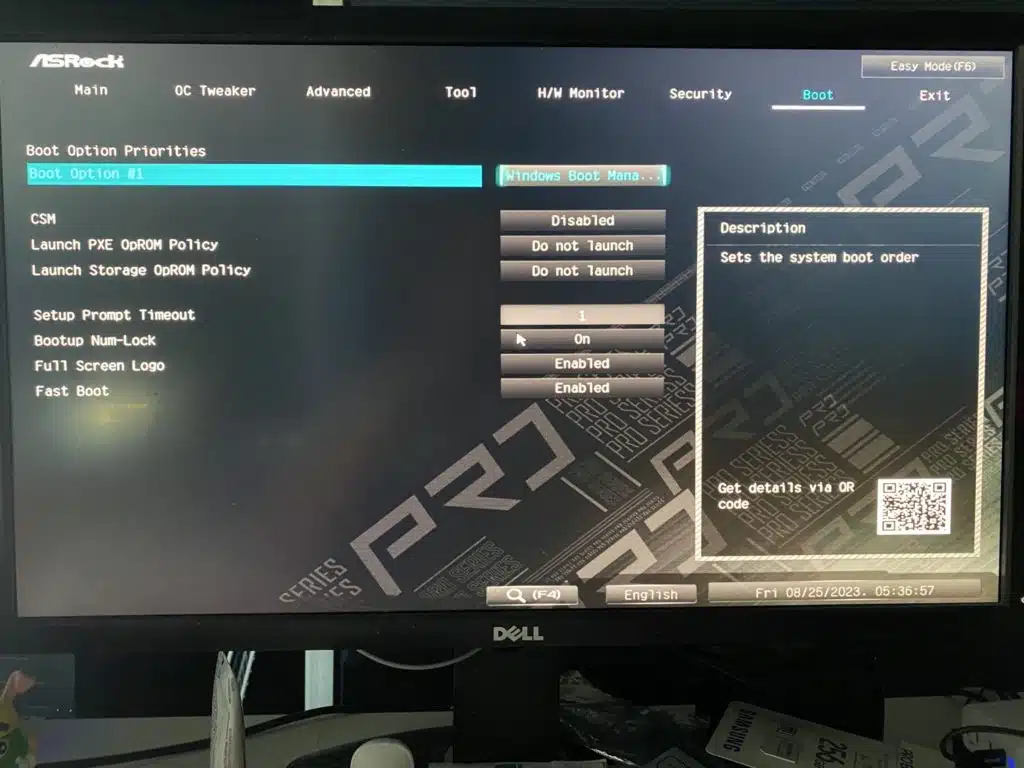
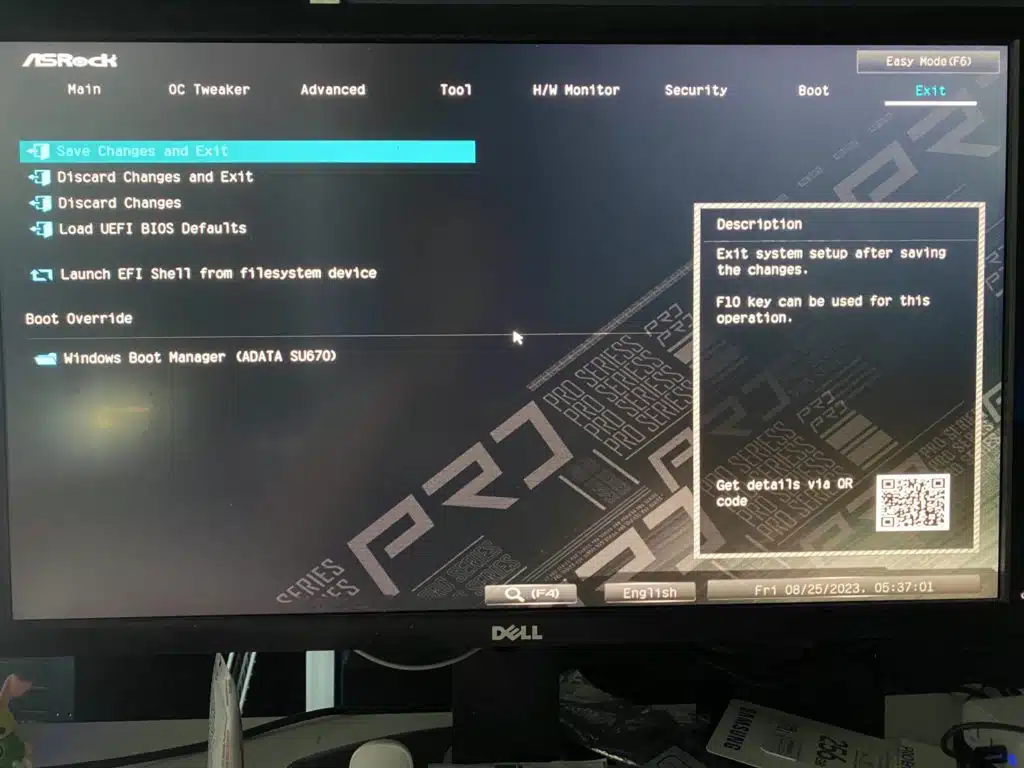
Test Setup
We have the latest BIOS installed, 1.28 released July 28th, 2023. All of our testing was performed at the default settings from the BIOS with the exception of the memory, here we set the DRAM to the A-XMP-1 profile for full speed on our memory.
For the OS setup note that we are on the latest H2 Windows 11 update with all incremental Windows updates applied at the time of writing.
Due to us having a maximum speed of 5.1 GHz all-core speed during testing, we are going to be providing only one set of data measurements for the ASRock X670E Pro RS, and note any large departures performance-wise from what we expect based on previous testing.
Subsystem Testing
DPC Latency
The highest measured interrupt-to-process latency after a 10-minute run time was 107.6, and over three runs we averaged 100.3, While these numbers are markedly higher than what we have experienced with pre-AGESA 1.0.0.7a BIOS revisions, it is right in line with the values we have seen since all motherboard manufacturers have released patches for the over-voltage issue.



SSD Performance
For this motherboard we tested all five slots, with performance in the area we expected since we are maxing out the M.2 slots with our PCIe 4.0 test device the Samsung 980 Pro 500GB M.2 NVME SSD. While all the Gen4 slots are about the same in performance, M2_2, and the Gen5 slot, M2_1, that are served by the CPU directly had read speeds of over 6,700 MB/s (6,755.41 MB/s for Gen5, and 6,741.35 MB/s for Gen4), and write speeds of 4,880 MB/s (4,897.34 MB/s for Gen5, and 4,863.3 MB/s for Gen4), which are just about the maximum we can expect for this drive.
The other two Gen4 slots both performed around 6,530 MB/s read and actually had slightly higher write speeds of around 4,900 MB/s. Unsurprisingly the lone Gen3 slot is the slowest at 1,643.87 MB/s read and 1,626.42 MB/s write speeds.
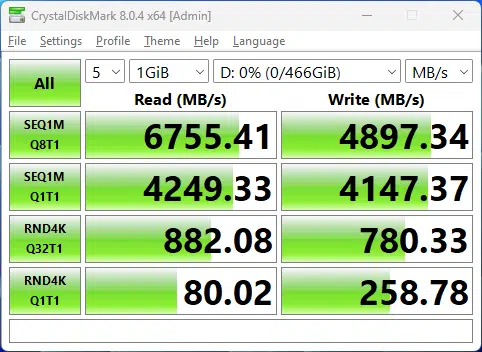


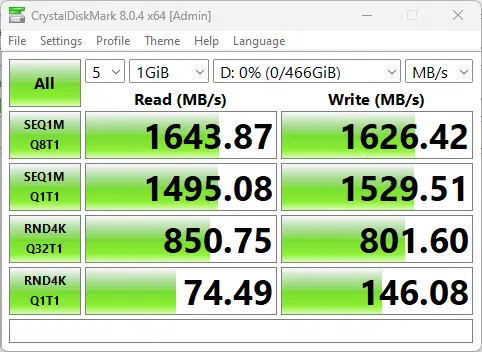

Application Benchmarks
Memory Bandwidth
For our application benchmarks, we are going to start with Aida64, and its memory read and write performance test. At the default settings, with the memory set to 6200MHz, the read performance on this motherboard is 73,954 MB/s of bandwidth, which is in line with most of the AM5-based motherboards we have tested to date, while the write performance comes in slightly under others we have tested at 77,626 MB/s, coming in at the second highest speed we have tested at.

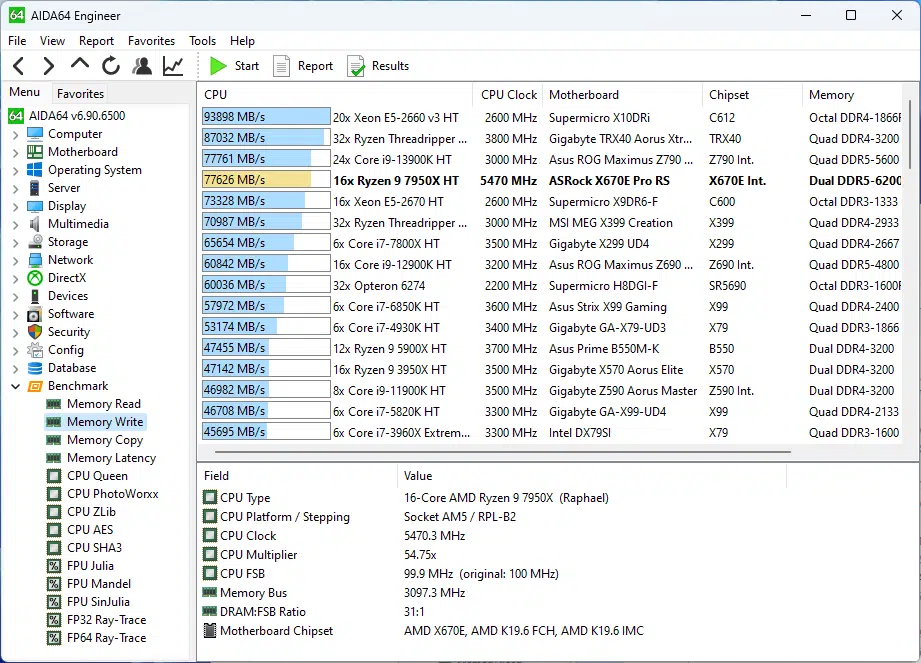
PCMark 10
The standard PCMark 10 test result that we were able to achieve is 9,277, which is about 10 % less than we saw on our initial 7950X Review ( AMD Ryzen 9 7950X CPU Review – Page 3 of 9 – The FPS Review ), however take caution with comparisons as we were also able to achieve higher clock speeds with PBO in that testing.

Cinebench R23
With Cinebench we ran the multi-core test multiple times and consistently received a score of around 34,653. This is one of the lowest scores we have achieved to date with our 7950X CPU, and not what we expected in comparison to even the B650-based motherboards we have tested.
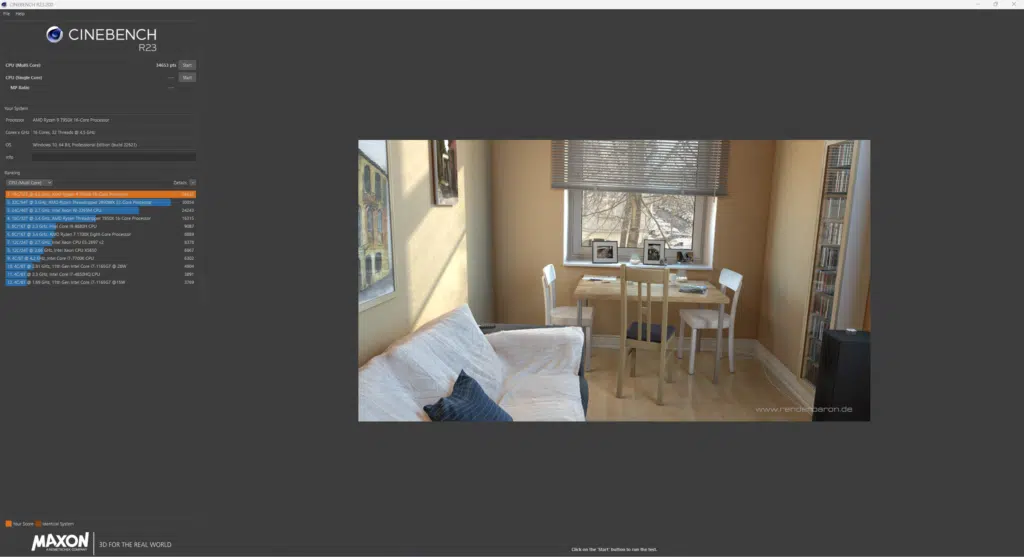
Blender Benchmark
With Blender, we were able to achieve 263.80 samples per minute for the monster test, 172.74 for junkshop, and 130.15 for the classroom tests. These values are around what we expect to see but it should be noted this slots us performance-wise slightly below the two B650-based motherboards we have reviewed (the GIGABYTE B650 AERO and the ASRock B650 Pro RS), however, this is starting to be a trend, likely due to recent AGESA BIOS updates for the CPU over-voltage issues that plagued earlier BIOS versions.
3DMark
We ran both Time Spy and the CPU Profile tests with 3DMark. With the Time Spy test, we achieved a 14,118 score, and for the CPU profile on max threads, we achieved 15,566. These are right in line with all of the other AM5-based motherboards we have tested to date.


V-Ray Benchmark
Running V-Ray we achieved a score of 28,266, again this is right in line with what we would expect.
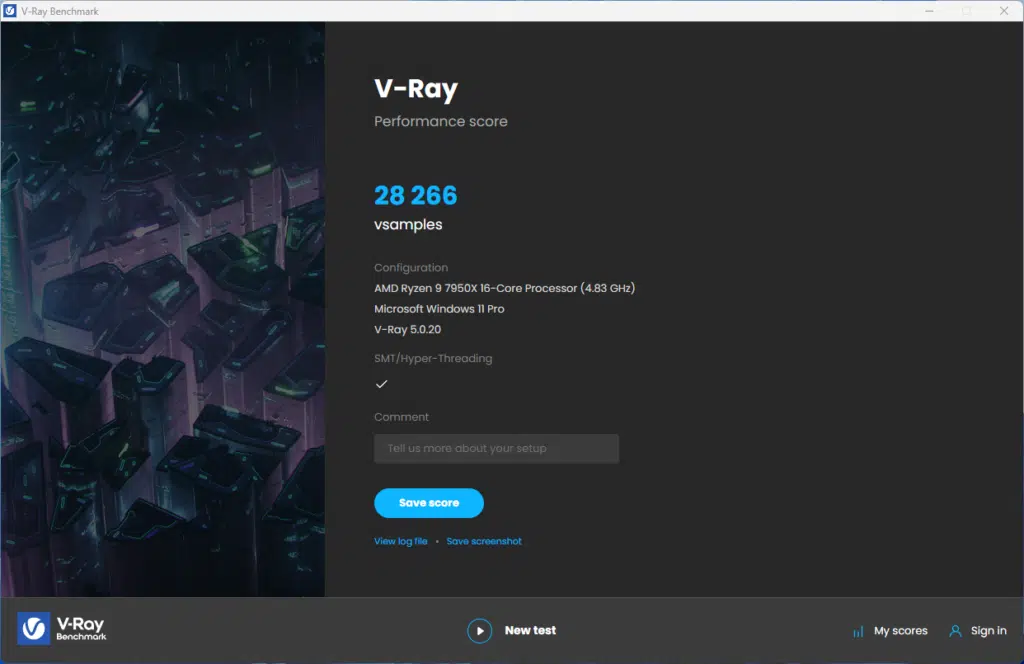
Conclusion
Today we have evaluated the ASRock X670E Pro RS which is the bigger brother of the ASRock B650 Pro RS and is currently selling for $279 on Newegg (About $50 above the B650 variant). Though this is not a high-end X670E motherboard, in testing its VRM and MOSFET cooling design held up well, and has cooling for three (3) of the Gen4 M.2 slots. This board has some features we do not see on other motherboards in this price range, or even higher, such as the additional SATA connectors, as well as having a total of five (5) M.2 drive locations, which is ideal if you are looking for a high powered work station with heavy local data needs.
Installation and Use
The physical installation of this motherboard is about what you would expect for any standard ATX motherboard, with the fan headers and power connectors exactly where you expect to see them. However, as we mentioned earlier in this review we do have a few issues with design choices taken by ASRock. We would have liked to see a slightly different screw head pattern on the screws for the lower M.2 slot. Additionally, we would have liked to see some more space between the top M.2 slot and the first PCIe x16 slot, however, this is hardly an ASRock-only issue that we have seen.
Beyond this, the BIOS was very user-friendly and easy to navigate as everything was located where we expected to find it, and readily available to be adjusted. On top of this, we had no issues doing a BIOS upgrade as the process went flawlessly from a few versions back to the most up-to-date BIOS.
Final Points
Today we have put the ASRock X670E Pro RS, which is a mid-range X670E motherboard, through our test cycle. During our testing this motherboard was able to pass our testing with no issues, we saw no stability issues even though the testing environment was a bit hotter due to the summer heat. Additionally, we were happy to see that all of the drivers worked out of the box with Windows on the initial installation, the RAM had no issues hitting its rated speed of 6200MHz, as well as meeting our performance expectations.
For a motherboard selling for under $300 currently, we can’t say much bad about a motherboard having the feature set of this motherboard. We were happy to see a large number of storage connections available, from the M.2 slots to the multitude of USB connection options, to the 6x total SATA ports, making this an ideal motherboard for a workstation for any professional, or content creators especially. It should be noted that the decrease in speeds for the synthetic benchmarks could be caused by the AGESA upgrade to 1.0.0.7 Patch A in the BIOS, which our earlier reviews did not have. These slightly slower synthetic speeds should not account for any actual real-world usage changes you will be able to notice.
The ASRock X670E Pro RS has tons of features, the 2.5 GbE LAN, WiFi 6E compatibility out of the box, multiple USB-C connectors, Type-A Gen 3 ports, and a total of five M.2 slots, puts this motherboard at the top value that we have reviewed to date.




